With no game on the schedule this week for the Ducks, there is no better time than now to take a moment to reflect on what we’ve seen from Mario Cristobal’s bunch through five weeks of action.
As part of our “Bye Week Brush-Up” series this week, WFOD will be taking a closer look at who and what has stood out to us thus far, as well as offer our assessments on what we might be able to expect once the Ducks return to action next week.
To kick things off, WFOD offers a position-by-position recap of the Oregon offense.
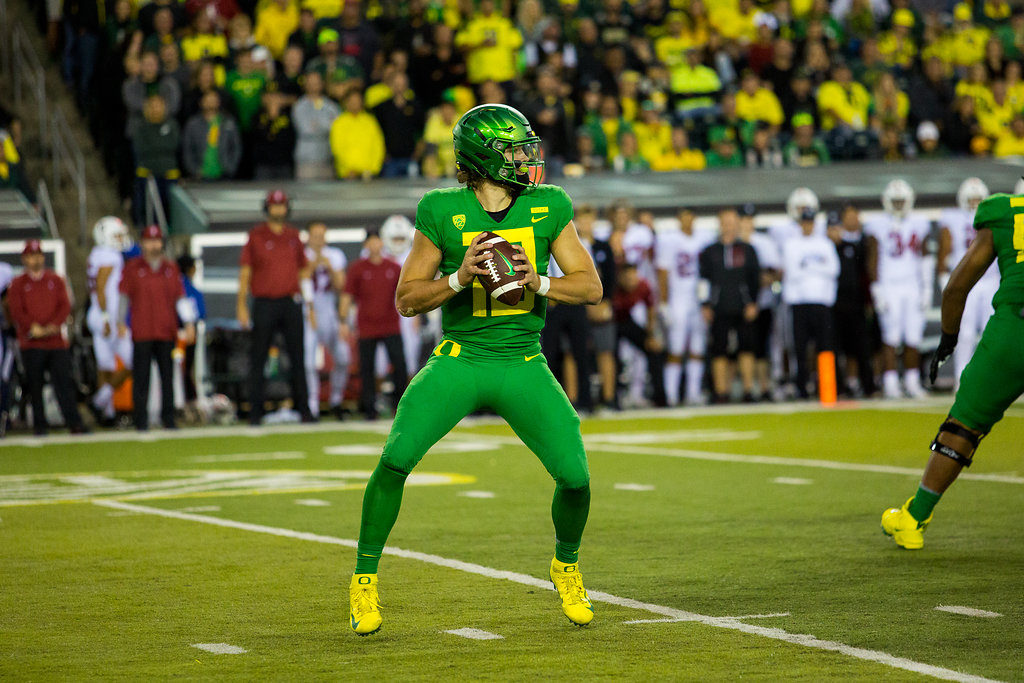
Quarterback
It’s hard to find the right superlatives that appropriately describe just how impressive Justin Herbert has been at quarterback for the Ducks this season. Everyone knew coming into the year the kind of difference maker he was for the Oregon offense. The statistical evidence from last season has more or less been committed to memory at this point, as the Ducks averaged 49.1 points per game with Herbert in the starting lineup compared to only 15 points per game when he wasn’t.
In 2018, a healthy Herbert has the Ducks humming along a similarly prolific offensive trajectory. The Ducks currently lead the Pac-12 in both scoring offense (45.6 points per game) and total offense (503.6 yards per game), and have proven to be one of the nation’s most efficient offenses through five games, boasting an offensive success rate that ranks 20th nationally per Football Outsiders. Oregon’s record may have a blemish, but with Herbert at the controls, the sky remains the limit as to how high the Ducks can fly this season.
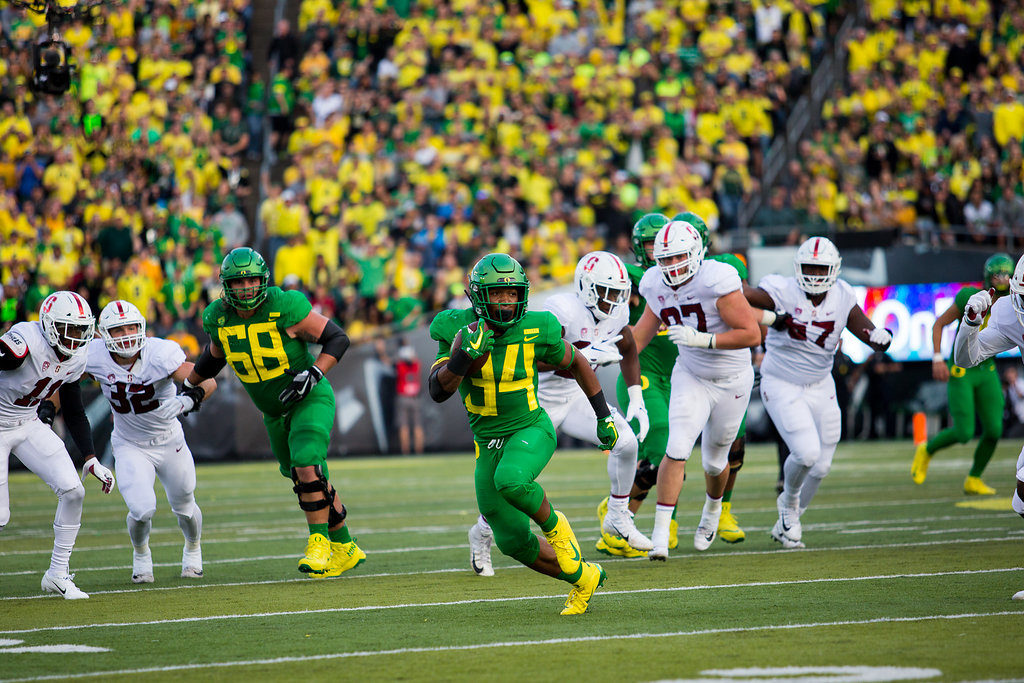
Running Back
Despite the return of senior Tony Brooks-James, the running back position was arguably the biggest offensive question mark for the Ducks before the season began. Five weeks in and it still remains somewhat of a question mark, though there’s undoubtedly been some encouraging developments with regard to the depth that has begun to reveal itself. In particular, the play of redshirt freshman CJ Verdell and true freshman Travis Dye has provided life to the Oregon running game. Though neither player is likely the prototype for what Cristobal is ultimately seeking at the position, both players are producing nonetheless.
While he’s dealt with fumbling issues (notably against Stanford), Verdell has been the Ducks’ most consistent ground-gainer, having rushed for a team-high 420 yards on 68 carries (6.2 yards/carry) to go along with two touchdowns. His physical running style is a differentiator amongst the backs on Oregon’s roster and he’s a better-than-advertised receiver out of the backfield (nine catches for 112 yards). Dye may not share Verdell’s punishing running style by comparison, but he’s more explosive and has been unfazed by the prominent role he’s played early on as the Ducks’ second leading rusher (46 carries, 253 yards, two touchdowns). Cyrus Habibi-Likio – another redshirt freshman – has also excelled in his role as Oregon’s goal line back, having found the end zone six times on just 13 carries.
Oddly enough, in spite of his experience, Brooks-James has been the player who has had the toughest time finding his footing within Oregon’s more power-oriented rushing attack. An ankle injury suffered vs. Stanford has impacted his contributions of late, though he’s expected to return to full health once the bye week concludes. Expect TBJ to reclaim a regular role within the offense at that time, but don’t be surprised to see Verdell and Dye command the lion’s share of the carries moving forward.
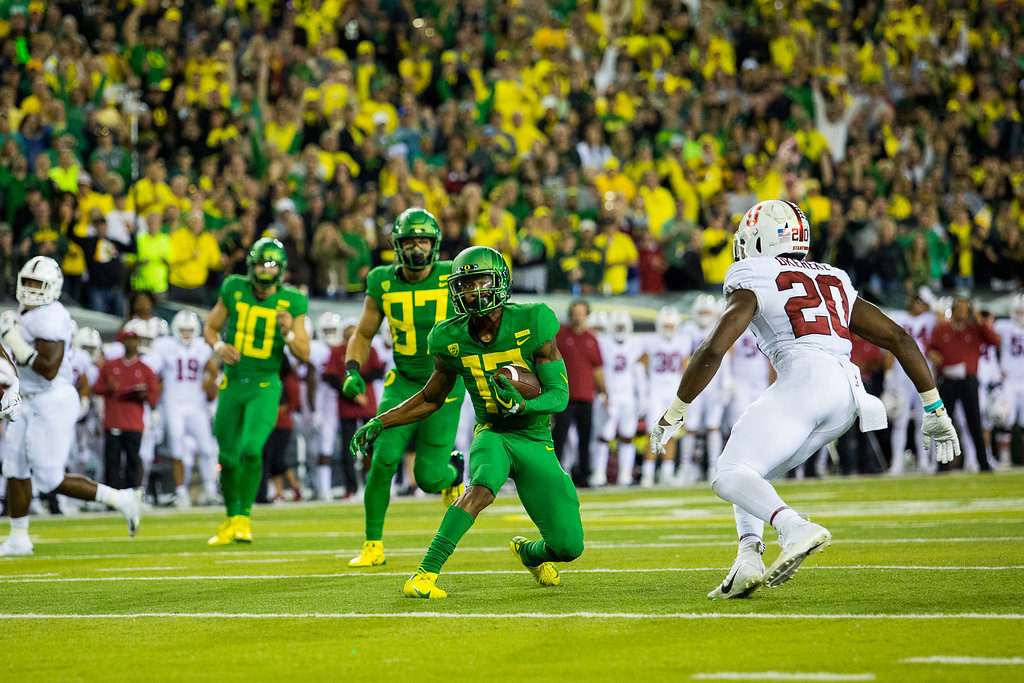
Wide Receiver
Herbert and junior wideout Dillon Mitchell demonstrated a potent connection last season that was ultimately interrupted once Herbert was sidelined with his collarbone injury last September. The expectation was for the two to pick up where they left off at end the of last season, when Mitchell finished the year with back-to-back 100-yard receiving games versus Oregon State and Boise State. However, a slow start to the 2018 campaign left many wondering where exactly Mitchell disappeared to, as his six catches for 98 yards and one touchdown through three games underwhelmed. As it turns out, the Oregon coaching staff was keeping him relatively under wraps. Since conference play started, Mitchell has erupted for 21 catches for 344 yards and a touchdown, asserting himself as one of the Pac-12’s most dynamic receivers.
The only question is who steps up to help deflect attention that opposing defenses will pay to Mitchell. Sophomore Johnny Johnson leads the Ducks in touchdown receptions, but has been a player plagued by drops for much of the year. Fellow sophomore Jaylon Redd has proven to be the Ducks most versatile receiving option, but has similarly battled drops and has struggled to find consistent targets within the offense. Brenden Schooler (six catches, 57 yards) has been even less of factor in the passing game, while Wake Forest grad transfer Tabari Hines has been virtually non-existent as a contributor after catching three passes for 32 yards and touchdown against Portland State in Week 2. Finding reliable complementary weapons to Mitchell will be something to monitor in the weeks ahead.
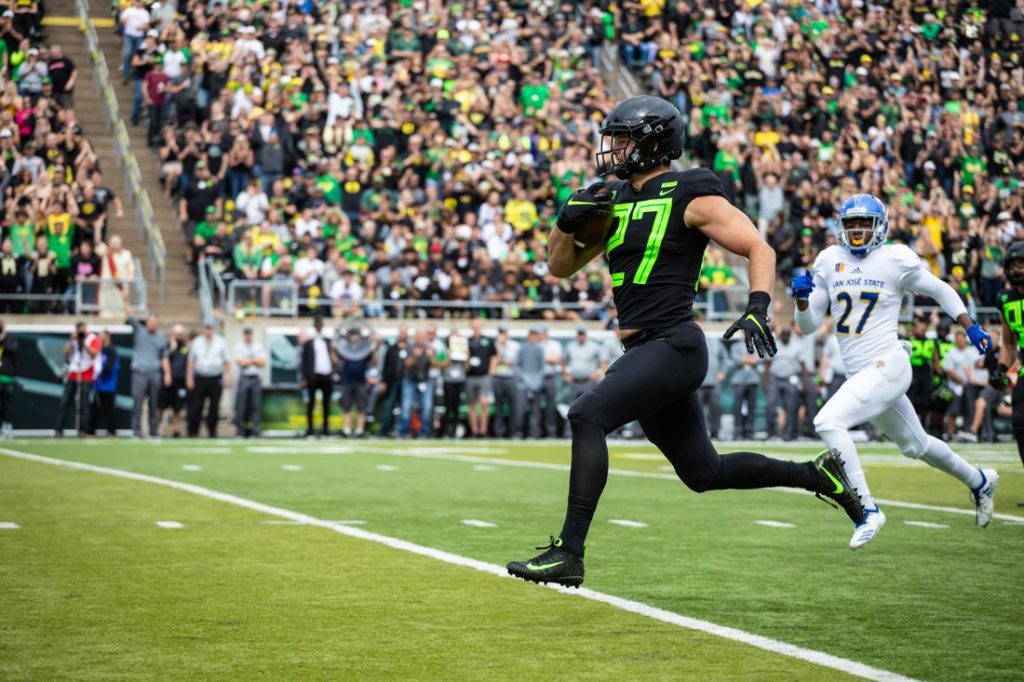
Tight End
Though the Ducks haven’t received overwhelming production from their tight ends, they have been the beneficiary of consistent play from a unit that is the deepest of any of the skilled positions on the Oregon roster. The season-ending leg injury suffered by expected starter Cam McCormick in the season opener put a damper on things as the year got underway, but the Ducks have rebounded nicely by employing a variety of offensive sets that have featured the talents of Jacob Breeland, Kano Dillon, and Ryan Bay.
A candidate for a breakout season prior to fall camp, Breeland lost his grasp on the starting tight end job after nagging offseason injuries and the improved play of McCormick proved to be too much to overcome. Still, Breeland has been integral to Oregon’s offensive success and has performed like a starter in his four appearances this season, snagging seven catches for 131 yards and two touchdowns. Dillon, the USF grad transfer, has helped augment the impact of the tight end group with his five receptions for 77 yards and two touchdowns. Both he and Breeland have excelled in the run game as blockers as well, though the best of the bunch may be Bay, who has carved out an important role as inline blocker in Oregon’s rushing attack. This group may be unsung but they have been as consistent as any positional unit for the Ducks this season.
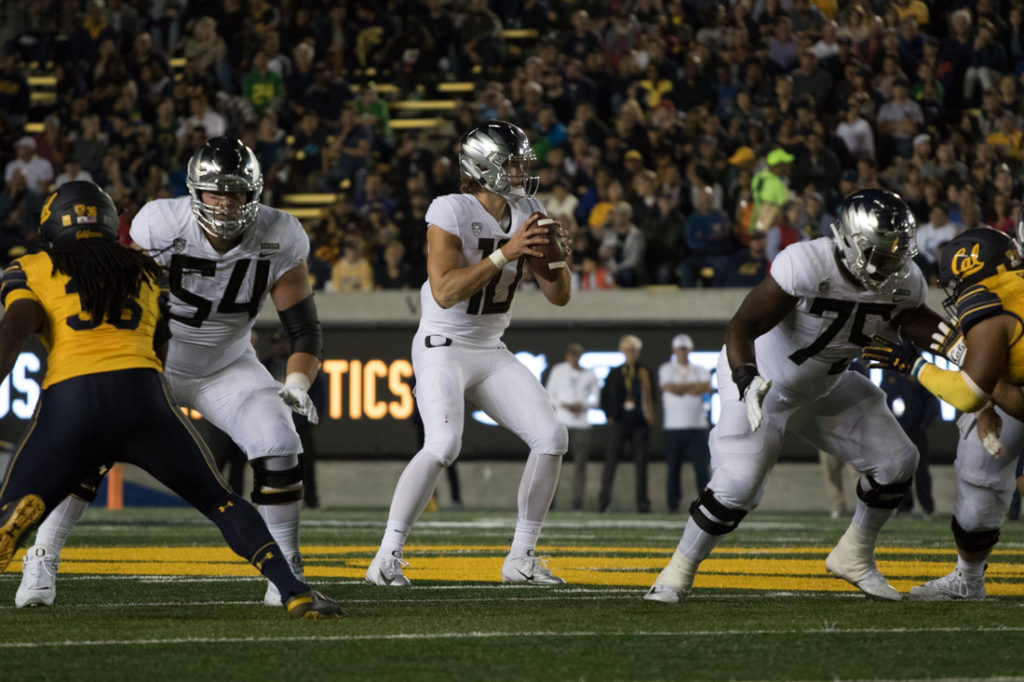
Offensive Line
Deep and veteran-laded, the Oregon offensive line has proven to be the backbone for everything that happens for the Ducks on offense. Led by a trio of longtime starters in redshirt juniors in Shane Lemieux, Jake Hanson, and Calvin Throckmorton, this group has taken on a whole new attitude and approach when it comes to imposing their will at the line of scrimmage. They’ve been aided along the way by Alabama grad transfer Dallas Warmack and All-World true freshman Penei Sewell, who became the first true freshman to start for the Ducks along the offensive line since 1997.
Following a lackluster performance in Oregon’s final non-conference game versus San Jose State, the unit seemed to find their footing against Stanford, owning the Cardinal at the line of scrimmage and effectively beating them at their own game – something that has been seldom seen in recent matchups between the Ducks and Cardinal. The Ducks followed that up with an even more impressive performance against a rugged Cal defense last week, as the Oregon offensive line paved the way for 260 yards on the ground while providing Herbert with a clean pocket for most the game. It may have taken a little time for everything to come together, but it feels as if this unit is finding its stride at the perfect time.

